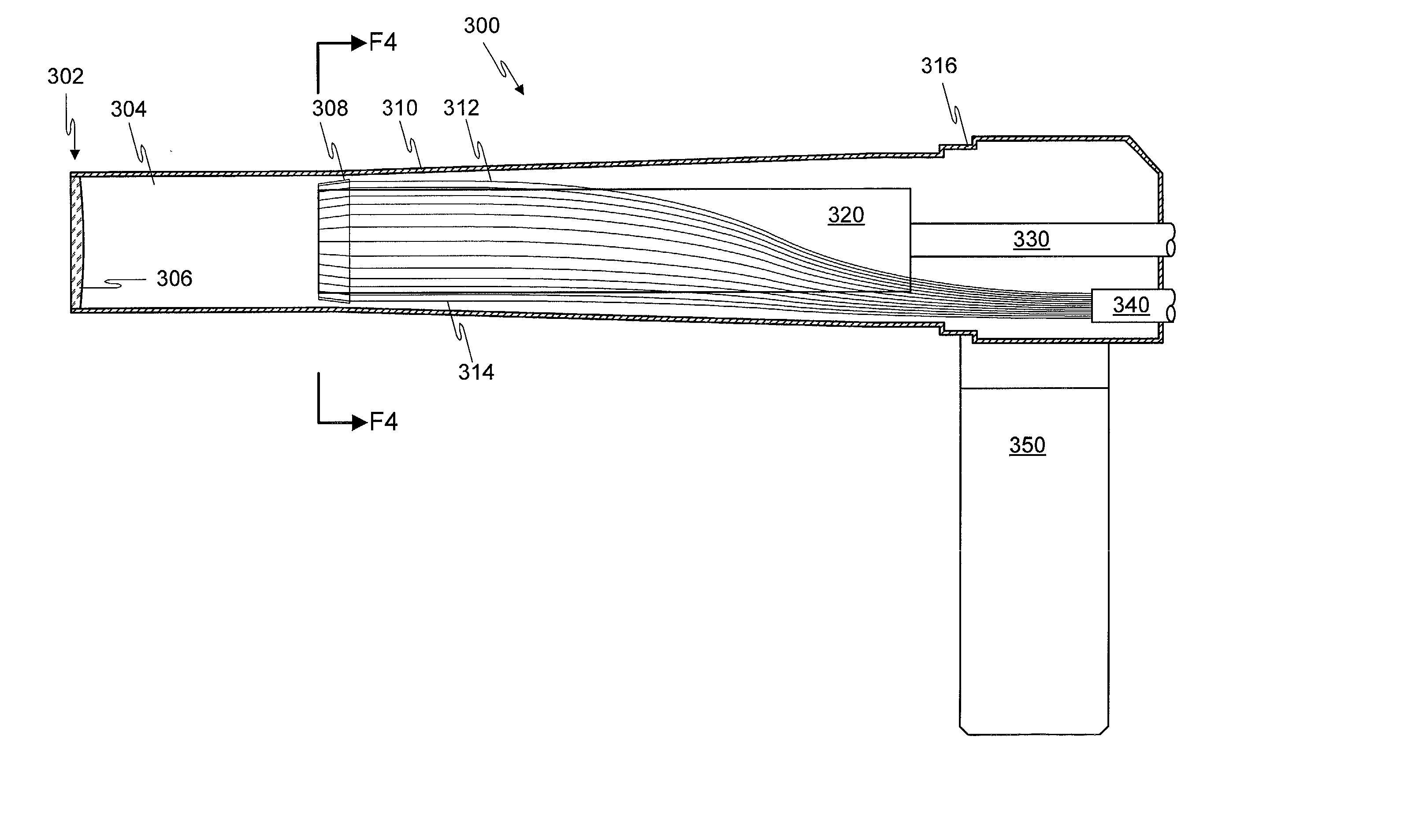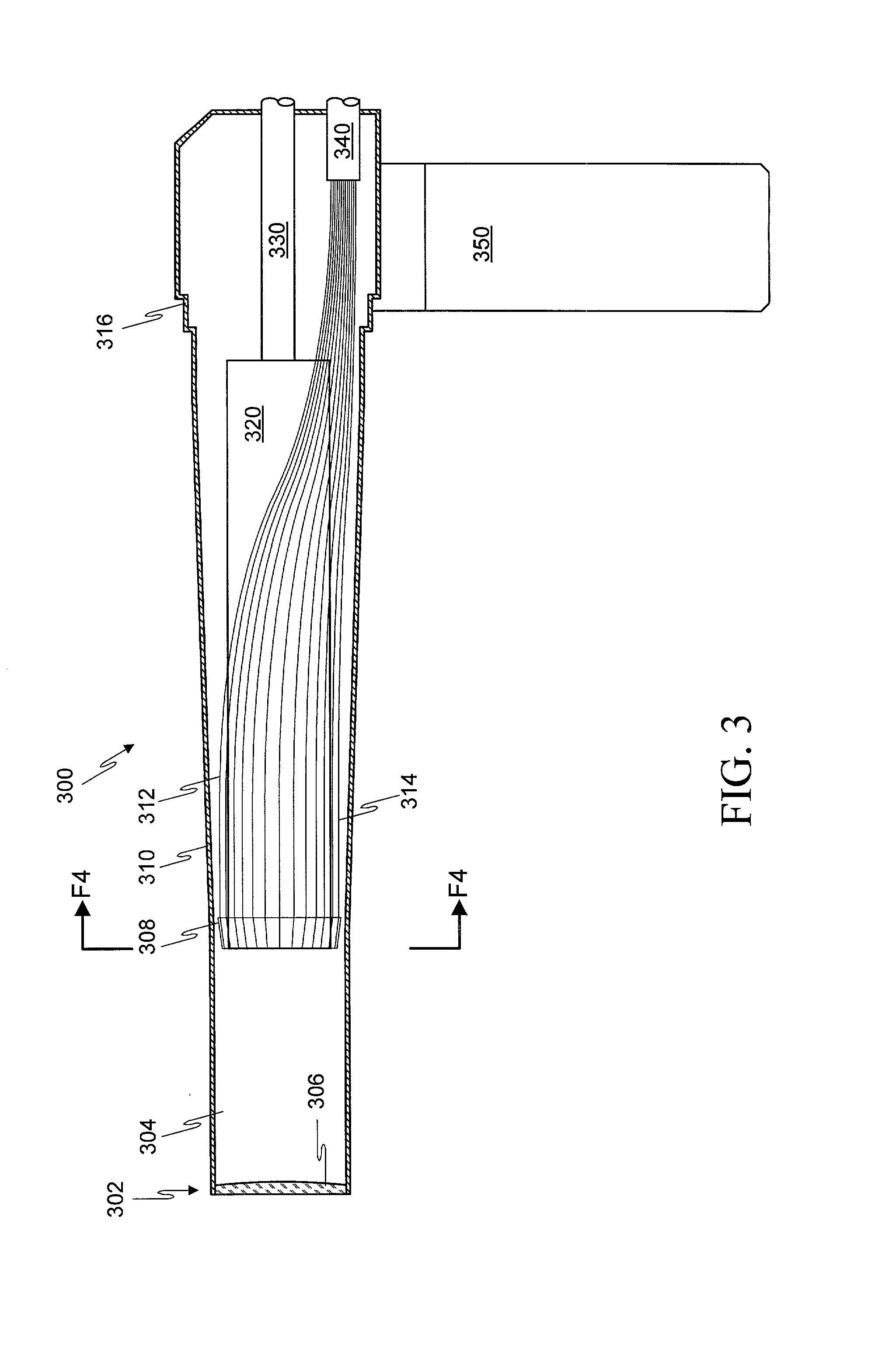Optical probe having and methods for difuse and uniform light irradiation
a technology applied in the field of optical probes and optical methods, can solve the problems of inability to achieve full contact, low depth of field, and inability to accurately detect the light energy returning from the targ
- Summary
- Abstract
- Description
- Claims
- Application Information
AI Technical Summary
Problems solved by technology
Method used
Image
Examples
Embodiment Construction
[0041] FIG. 1 shows schematically the basic elements of an illustrative optical system for the examination of materials. As used herein, optics refers to the branch of physics that deals with the generation, propagation, and detection of electromagnetic radiation having wavelengths greater than x-rays and shorter than microwaves, and light refers to electromagnetic radiation at one or more wavelengths (narrowband, broadband, or any combination thereof) anywhere in the electromagnetic spectrum greater than x-rays and shorter than microwaves. An optical probe 130 is used to irradiate the material being examined (i.e. the target) and for collecting radiation from the target due to the irradiation. A system controller and processor 100 controls the various operations performed by the system and processes various characteristics of the radiation image collected from the target to obtain multispectral indications about various properties of the target material. Where the material is mamma...
PUM
 Login to View More
Login to View More Abstract
Description
Claims
Application Information
 Login to View More
Login to View More - R&D
- Intellectual Property
- Life Sciences
- Materials
- Tech Scout
- Unparalleled Data Quality
- Higher Quality Content
- 60% Fewer Hallucinations
Browse by: Latest US Patents, China's latest patents, Technical Efficacy Thesaurus, Application Domain, Technology Topic, Popular Technical Reports.
© 2025 PatSnap. All rights reserved.Legal|Privacy policy|Modern Slavery Act Transparency Statement|Sitemap|About US| Contact US: help@patsnap.com



